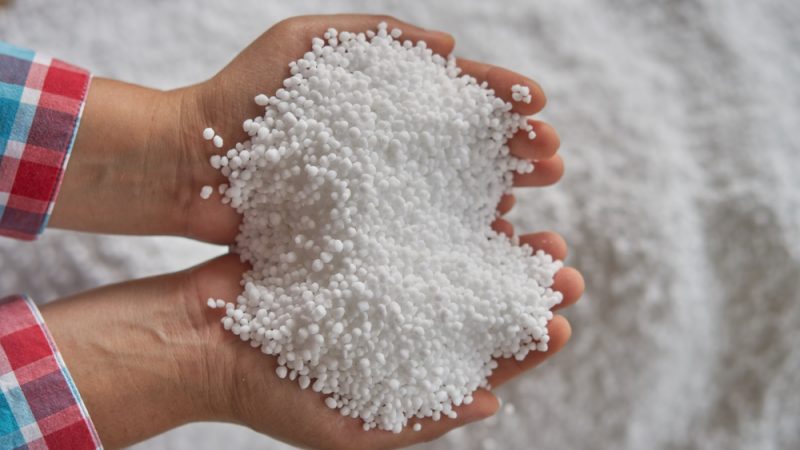New electrolyte to help better ammonia synthesis
Ammonia synthesis is an important process for industries producing green energy or hydrogen. However, the electrochemical ammonia synthesis process has been limited by the poor solubility of nitrogen (N2) in an aqueous electrolyte environment, as well as the competitive hydrogen evolution reaction.
In an effort to address these issues, scientists from the Institute of Nano Science and Technology (INST) in Mohali, India have developed a new electrolyte called sodium tetrafluoroborate (NaBF4) that not only acts as an N2 carrier in the medium, but also functions as a full-fledged “co-catalyst” with active material transition metal-doped nanocarbon (MnN4) to produce high yields of ammonia (NH3) under ambient experimental conditions.
Current Challenges in Ammonia Synthesis:
- The electrochemical reduction of N2, also known as the Nitrogen Reduction Reaction (NRR), is critical for the production of ammonia. However, researchers have faced several challenges in achieving this reaction in an aqueous electrolyte environment.
- One major obstacle is the poor solubility of N2 in water, which limits the efficiency of the NRR. In addition, the hydrogen evolution reaction (HER) competes with the NRR, reducing the overall yield of ammonia. As a result, scientists have mainly focused on catalyst development to overcome these challenges, while the improvement of electrolytes has remained in its infancy.
- According to a recent report, 90.7% of research on NRR has focused on catalyst development, while only 4.7% has been devoted to electrolyte improvement.
New Electrolyte
- To address these challenges, the scientists at INST have developed a new electrolyte called sodium tetrafluoroborate (NaBF4) that not only acts as an N2 carrier in the medium, but also functions as a “co-catalyst” with MnN4 to produce high yields of NH3 under ambient conditions.
- The high production rate of NH3 reached industrial scale and exceeded the performance of other standard catalysts in other electrolyte media.
- The source of NH3 was found to be primarily from the electrochemical reduction of purged N2 gas in the N2-saturated electrolyte.
This research, published in the journal PNAS, represents a novel approach to addressing the long-standing issues of N2 solubility in aqueous media and achieving industrial-scale NH3 production via NRR under ambient conditions. The development of the aqueous electrolyte NaBF4 is an important step towards improving the performance of electrocatalysts for NRR and could encourage further research on electrolyte design. A patent has been filed for this work, and the scientists are now working towards developing an electrolyzer for rapid NH3 production at an industrial scale.
Month: Current Affairs - January, 2023
Category: Science & Technology Current Affairs


